Interested in writing for our blog? Send your pitches to editor@miff.com.au.
In My Blood It Runs, Four Ways
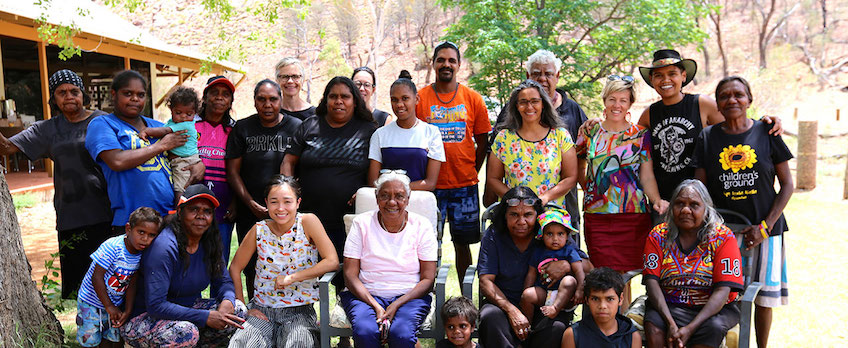
During the 2019 Melbourne International Film Festival Critics Campus, our participants took part in a live-editing workshop. Four of them reviewed Maya Newell’s In My Blood It Runs, and then edited their drafts with Adolfo Aranjuez. Read their final reviews below – and don’t forget to check out all of our Critics Campus coverage at the MIFF Blog.
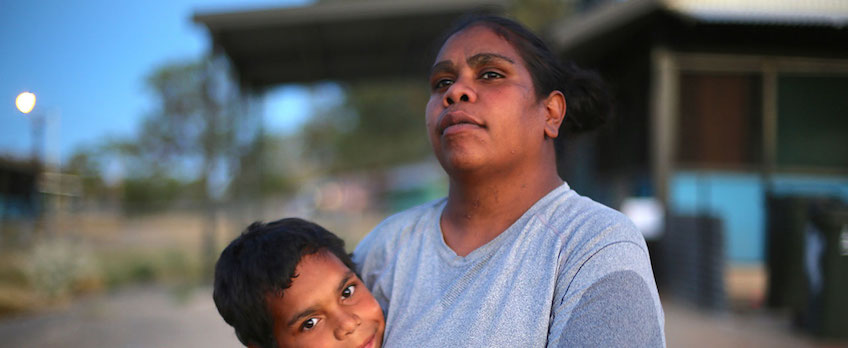
From In My Blood It Runs
By Michael Sun
Dujuan Hoosan can run: across outback plains at dusk; on corrugated-iron rooftops; down Alice Springs streets, waving a bubble wand to the wind. He’s buoyed by boundless energy – the kind that comes naturally to a ten-year-old.
But in the classroom, this lively Arrernte boy is reserved – and who can blame him? He raises his hand to correct his teacher on a misconception about Indigenous culture, only to be dismissed. "I find it a bit confusing about the spirit and Dreaming," she says, "but we’ve just got to believe it."
As Maya Newell’s new documentary, In My Blood It Runs, reminds us, classrooms are not neutral spaces, and neither are welfare systems. Neither are detention centres. Neither are governments.
Newell’s previous work was 2015’s Gayby Baby, a documentary on families with same-sex parents that incited uproar from conservative commentators and federal lawmakers. What made Gayby Baby so radical was its hands-off treatment of its subjects, observing stories of quiet existence – and resistance – without explicitly offering its own agenda.
In My Blood It Runs adopts a similarly observational approach, but here it’s politicised in a way that Gayby Baby wasn’t. It’s a stronger documentary for it.
Newell deftly splices together scenes of domesticity – Dujuan lounging with his mother and grandmother, or using his budding traditional healing powers to help family members – with archival footage of the Stolen Generations and Don Dale Youth Detention Centre. By exposing the immediacy of threats like violence, familial separation, the police state, the film becomes polemical in its intimacy. These dangers, familiar enough to become matter-of-fact topics of discussion around the kitchen table, underpin Dujuan’s every move as he bikes around empty playgrounds at night or falls in with a crowd of older boys at a local carnival.
Dujuan – and those as young as him – risk punishment for every mistake. Yet there are times where he’s allowed room for error, when Newell yields the camera to him and lets him run wild. Blurry, candid and imperfect, the footage grants agency to someone deprived of it for too long. And as he interviews his relatives about love, justice and inequality, he almost seems free, even if just for a moment.
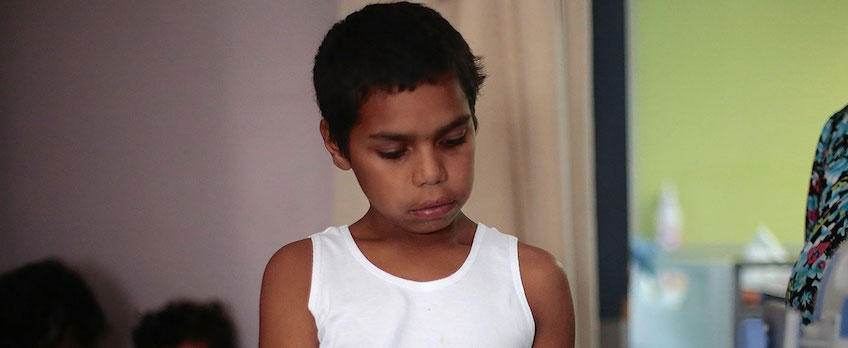
From In My Blood It Runs
Right now, all children in juvenile detention in the Northern Territory are Indigenous. In the wake of the Royal Commission into the Protection and Detention of Children in the Northern Territory, the Territory government is quietly rolling back the Inquiry’s recommendations. In schools, Indigenous children are more likely to be handed long suspensions, increasing their chances of incarceration.
These issues form the backdrop for Maya Newell’s new documentary In My Blood It Runs, an intimate portrait of 10-year-old Dujuan Hoosan and his Arrente family in Alice Springs, who are struggling against a system built by White people. Dujuan speaks three Indigenous languages, is a healer, and has hopes to become a leader and activist in his community. But at school, he’s disengaged, frequently in trouble, and draws concern from welfare services and the police.
Newell nimbly captures how the territory’s education system lets down Indigenous students, through scenes from Dujuan’s school where a teacher presents an uncritical, colonial narrative of Captain Cook “as fact”, while responding to Indigenous stories of The Dreaming with bemusement. Even when Dujuan’s mother moves him to a school with a more inclusive curriculum, Indigenous language classes have been reduced by the territory government to only thirty minutes per day.
The film is Newell’s follow-up to her documentary Gayby Baby (2015), which follows the lives of four kids raised by same-sex parents (and which became a focal point for controversy when school screenings were banned by the NSW Government).
Similarly, In My Blood It Runs is an artful examination on the consequences of government policy on the lives of children.
Power imbalances are implicit in documentary filmmaking, but Newell, who is non-Indigenous, remedies this in part by giving Dujuan and his family creative agency within the film (they are credited as collaborating directors, and Dujuan contributes his own handheld footage) and consulting with the Arrente community. Dujuan’s blurry, trembling close-up shots provide the film with a tactile intimacy.
On screen, Dujuan is magnetic: he cracks jokes, fizzes with curiosity, and speaks frankly about the importance of country and Indigenous self-determination. In one of the film’s most powerful moments, he imagines telling the Prime Minister to “stop killing Aboriginal people”.
Following a screening of In My Blood It Runs for the NT Parliament, Labor backbencher Chansey Paech read a statement by Dujuan in which he urged his government "try and understand what it is like for kids like me and maybe you can find a way to make things more better".
A particular strength of In My Blood It Runs is its depiction of how education, welfare, policing, displacement and paternalism are entangled in the NT, further entrenching disadvantage for Indigenous communities. In one scene, Newell shows Dujuan’s mother fretting over a letter warning her that her welfare payments could be cut off if her children continue to skip school.
In My Blood In Runs works as a tender character study, but through Newell’s use of damning archival footage, it’s also an urgent reminder that Australia needs to reckon with its brutal history to overcome structural disadvantages still faced by Indigenous people. As Dujuan says in the film: “You have to learn about the past so it can help you with your future.”
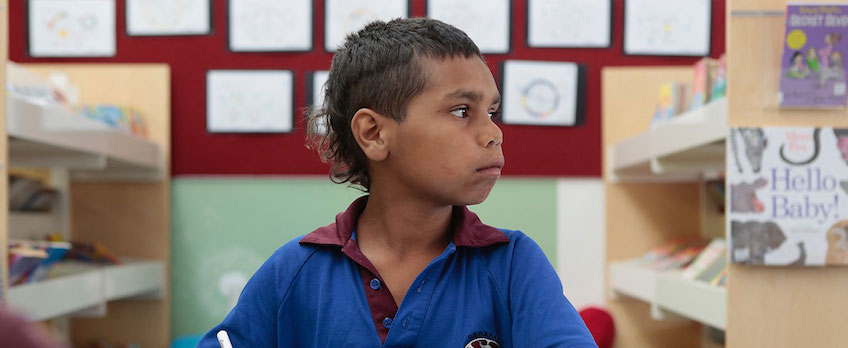
From In My Blood It Runs
By Jamie Tram
Alienation has always been a formative aspect of growing up. Many children from a variety of backgrounds lack a robust sense of belonging, and struggle to navigate their angst over being perpetually misunderstood. But in Australia, Indigenous children are institutionally marginalised, forced from their familiar way of life and into a society that’s seemingly designed to punish – but not understand – them.
This is the struggle at the heart of In My Blood It Runs, which focuses on Dujuan Hoosan, a talented and rebellious Arrernte child from the Hidden Valley camp in Alice Springs, who’s just turned ten – the minimum age of criminal responsibility in Australia. The film offers viewers tender portrayals of youth tempered with a simmering undercurrent of rage, contrasting Dujuan’s customs and connection to his homeland with the failure of Australian mandatory-education institutions to accommodate him. In an absurd encounter at his school, Dujuan has The Dreaming taught back to him from a picture book, and is abruptly dismissed when he insists that the spirits being mentioned are, in fact, real. Many such moments expose the incompatibilities between traditional ways of life and Western notions of child-rearing, and we are positioned to understand why Dujuan feels compelled to act out.
In her sophomore feature following Gayby Baby, director Maya Newell weaves multiple perspectives into a deeply personal examination of Australia’s institutional failure to support its First Nations peoples. The collaborative nature of this project is somewhat unusual for the form, since creative control is very rarely shared with the subjects of documentaries. At certain points, however, Dujuan himself helms the camera, using it to interview his family members and document his own life. In light of the history of misrepresentation and misappropriation of Indigenous stories in cinema, these moments embody a refreshing departure from the norm and restore agency to Dujuan, his grandmother Carol, and the rest of his family (most of whom have collaborating director credits). Most of the film has a very natural, free-flowing aesthetic, but this is occasionally interrupted by overly stylised images, such as the slo-mo shots of Dujuan running with sparklers in his hands. Scenes like this feel redundant in a film which already captures so many offhand moments of childhood grace.
Nevertheless, In My Blood It Runs remains a humanistic portrait of life on the margins, filtered through the eyes of a young Indigenous boy, and a vital call-to-action for Australia that is impossible to ignore.
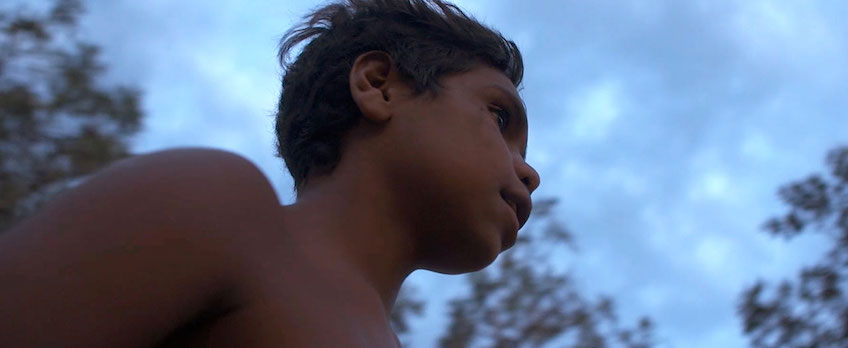
From In My Blood It Runs
Four years after the release of her debut feature-length documentary, Gayby Baby (MIFF 2015), director Maya Newell returns with In My Blood It Runs, which tackles Australia’s systemic abuse of First Nations children. The film tells the story of Dujuan Hoosan, a ten-year-old Arrernte boy who is striving to understand his place in the world. Born with what he describes as a ‘memory’ of his people that, through Australia’s white-washed education system, is beginning to slowly fade, Dujuan – with his family’s help – tries his best to maintain his connection to Arrernte history and languages. Through the perspectives of Dujuan and his family, the film shows us that Australia’s education system is interwoven with its welfare and penal systems in ways that are detrimental to First Nations peoples.
Dujuan’s mother and grandmother moved the family away from their homeland so that their children could receive an education. Newell uses this revelation to introduce the direct link between Indigenous childrens’ disconnection from country and their inability to control anger and stay focused. Dujuan struggles to concentrate in class, his boredom compelling him to behave badly so that he can avoid unwanted history lessons. Upon receiving a report card of straight Es, Dujuan believes something is wrong with him, and soon enough, with little empathy or support from his teachers, he is expelled from school.
Scenes showing his manifestations of anger are interspersed with archival footage of abuse from Don Dale Youth Detention Centre and information about Australia’s age of criminal responsibility (ten years old, which pales against the UN standard of twelve); through these, we come to see how Dujuan’s disconnection from land and history has a harmful ripple effect that keeps his family down. Dujuan’s mother explains that not only do his disappearances and expulsion from school leave him at the mercy of local authorities – who are jacked up with military-grade weapons and eager to put children away – but also that each time he is reported to the police for loitering, her only stream of income is threatened to be taken away.
What made the relocation closer to school worthwhile in his mother’s and grandmother’s eyes was their children having the opportunity to learn about the system that oppresses them. However, in order to achieve this, Dujuan and his siblings had to sacrifice the space in their memory encoded with ancestral heritage and their place within community. In My Blood It Runs asks us to re-evaluate Australian history, and to realise that the atrocities upon which this nation were founded are not a distant memory; what First Nations peoples are experiencing today is, in fact, a form of déjà vu.